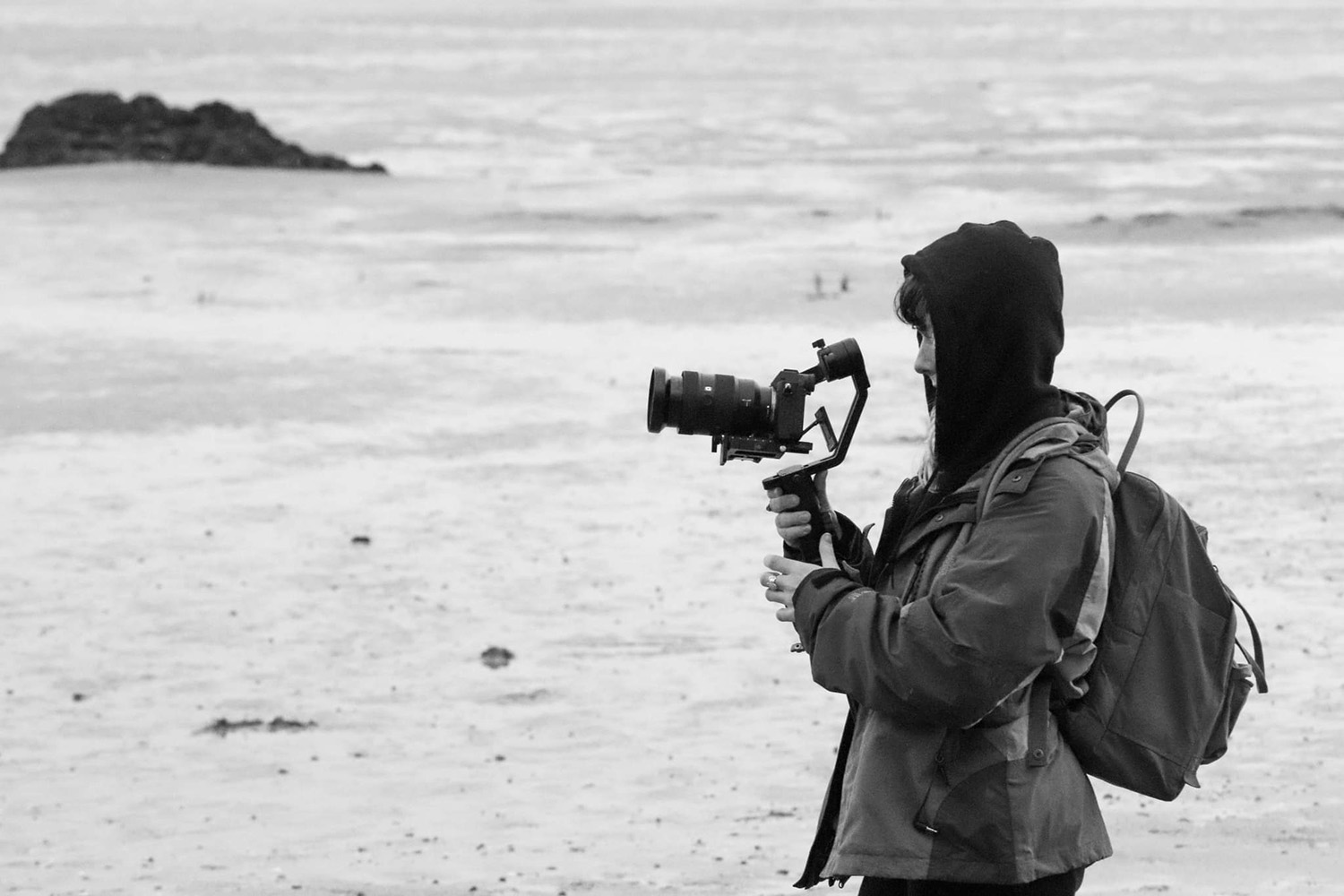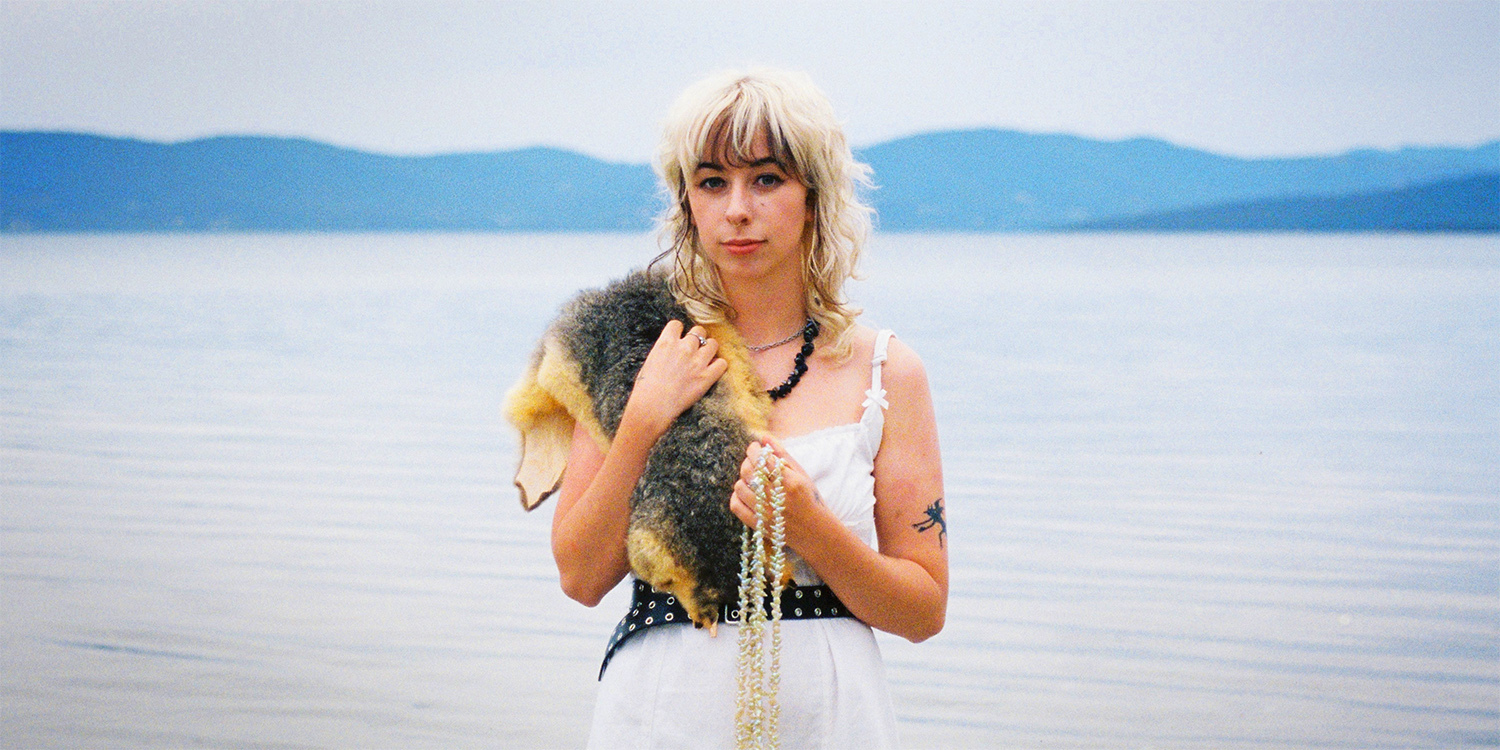Georgia Stone is an emerging writer and producer from lutruwita/Tasmania with a passion for First Nations storytelling. Georgia took her first steps towards her film a career while at school and soon gained work as an Indigenous Attachment for Blue Rocket’s second season of the NITV children’s animated series Big J and Little Cuz, followed by an Operations Traineeship with ABC Hobart.
In 2021, Georgia launched her own production company, Blak Cockatoo Films. She worked in crew roles on two of Tasmania’s recent major television productions, Prime Video’s Deadloch and SBS’s Alone Australia, through which she gained enormous industry experience to shore up her career path.
What inspired you to enter the screen industry?
I have always loved storytelling. It’s an innate part of my makeup, my family and culture. Some of my earliest memories are spending time with my grandma as she went to schools sharing cultural stories, and I can still feel the awe and power of what a good yarn does when you can connect deeply with your audience. Screen felt like the natural extension of storytelling – the ability to enhance verbal stories with visuals.
I studied my Certificates III and IV in Screen and Media while at school. I owe that course and my teacher, Simone Cunliffe, a tremendous amount as it truly gave me the start I needed to pursue my career. During this study, I gained fantastic foundation knowledge and connections in the Tasmanian screen industry as well as the opportunity to produce several works for varying Tasmanian companies.
In 2019, Screen Tasmania supported you to attend the AIDC Australian Indigenous Creators Program – what did you learn from that experience?
The AIDC experience was incredibly eye-opening. At that stage, I wasn’t sure what direction I wanted to take. All I knew was that I wanted to create vessels to share stories, and that documentary seemed like the best space to enter.
AIDC allowed me to meet a heap of other mob who were passionate about storytelling and in different stages of their careers, whilst also opening my eyes to different formats of storytelling. It reaffirmed that this is what I am supposed to do, and really helped me connect my aspirations as a filmmaker to tangible processes and outcomes.
As a fledgling filmmaker, sitting and listening to directors and producers talk about their story processes and, in particular, the production timeline gave me confidence in my future projects.
Can you share some of your experiences working on Deadloch and Alone Australia?
Deadloch was my first major production. I’d only worked on TVC’s and produced my own works under my production company in the year before the show, so coming on to a major set as a runner was a giant eye-opener.
I was incredibly nervous the first time I had to go to set, because it was such a giant, moving beast and a whole new type of time pressure I hadn’t experienced. I learned to just say ‘yes’ to everything. Every small job, every opportunity to help and try new things and, most importantly, learned how to pace myself through a long-form job without burning out.
I made such incredible, lifelong mates and have so many wonderful memories from that shoot: the cast singing happy birthday to me on the drive to set, navigating steep and narrow terrain in a Kia Carnival, and the copious journeys to Officeworks.

Alone Australia was a whole new ballpark again. I came on in the last week of pre-production, and it was all guns blazing. It was my first ‘away’ job and, although I was employed as a Production Assistant, it was a new format so I had to flip a lot of what I had learned on dramas to fit into the ob-doc space.
I love working in lutruwita (Tasmania), so being able to share that love with an interstate crew was very special. I was incredibly lucky to work with a team who wanted to share knowledge and raise young crew into positions whilst creating the show. This led to me working as a Casting Associate Producer for the majority of the shoot, and getting the opportunity to work in the editorial area story logging as well.
I learned to let people know what I wanted to achieve in this industry, to take on board everything and anything those with experience offered, and that I was capable of a lot more than I first granted myself.
Your role with Alone Australia was through the SBS Diversity Talent Escalator (DTE) – why did you apply to this program and what did you gain from it?
I applied for the program off the back of working on Deadloch. I knew that a program like DTE would give me the opportunity to push into roles that a normal contract wouldn’t, and I was lucky enough to work with a sensational crew who gave me opportunities to try a variety of roles.
The DTE program accelerated my career progression whilst letting me work in our beloved state, and ultimately set the path that I am currently on. I gained new skills and confidence in my storytelling ability, whilst connecting with industry professionals who are now a part of my career network.
Part of your role with Alone Australia was to watch for physical and emotional changes in cast members – how important is it to you for the film industry to be a safe place?
For crew, we put our personal lives often on hold to create, working long hours in sometimes high-stress environments. There has to be safety around keeping who you are as a person, keeping the love for the project and storytelling alight and, of course, your physical and mental safety.
The same always goes for cast, particularly in the current setting of stories. We have entered a really amazing space in screen where a lot of projects delve into some hardcore themes that require both cast and crew to be exposed to complex emotions and themes. I’ve been blessed to work with amazing producers who maintain a high level of care and consideration for their team whilst producing beautiful works, and it’s inspiring. It’s how I aim to work.

You went on to gain employment in Sydney following Alone Australia – what can you share about that project?
Leaving lutruwita and working interstate wasn’t ever originally on the cards for me, but after working with mainland crew I was offered opportunities to work in different spaces. My first job in Sydney was on a comedy sketch show for Channel 10 called We Interrupt This Broadcast, which came from working with a wonderful line producer previously. It was a new experience working in continuity, logging and script supervision. Again, I got to work with some phenomenal people who are now not only industry connections but friends with whom I catch up regularly.
You’ve said you’d like to work with First Nations stories in the future. How important is it for you maintain your connection with your culture through your career and bring authentic stories to audiences?
The whole reason I entered into the screen space initially was to be able to maintain cultural connection through storytelling and community voice amplification. There is no other direction for me than this. It’s not a matter of importance – it is my core drive.
We have so many stories that need to be documented and my culture and people are the backbone of my goals, my work and ability to push when the going gets tough. I am currently working hard to create pieces with, and learn from established film mob, which is where my heart belongs. I love how strong and diverse the First Nations filmmaking community is, and I want to make sure that the stories I amplify are always grounded in elevating our communities.
What would success look like to you?
Success for me is to have continual work in lutruwita, particularly for First Nations crew. I don’t need my name in lights. I need to work with my people and give back to community with opportunities to learn, grow and develop our ongoing generations of storytellers.
My ultimate goal is to have Blak Cockatoo Films cemented as a production company that employs First Nations peoples to tell First Nations stories, and allows us to live and work without leaving community and Country. By spending a few years working away from home, I intend to grow my network, skill set and reputation to invest longevity into Blak Cockatoo and create sustainable career progression for mob.
What’s next for you?
I’ve just wrapped working as an Associate Shooter Producer, so I am using the time between larger production jobs to write. I have several shorts that I am co-writing on, creating an art piece with some mainland mob and writing a long-form drama that I hope to get to the development stage for next year.
If the contracts are there, that will be my life but my downtime is currently writing, development work, pre-production or coming home. I love working on mainland sets to upskill, connect and create with new people, but I’m always grinding behind the scenes to be able to come home and share stories of lutruwita.
